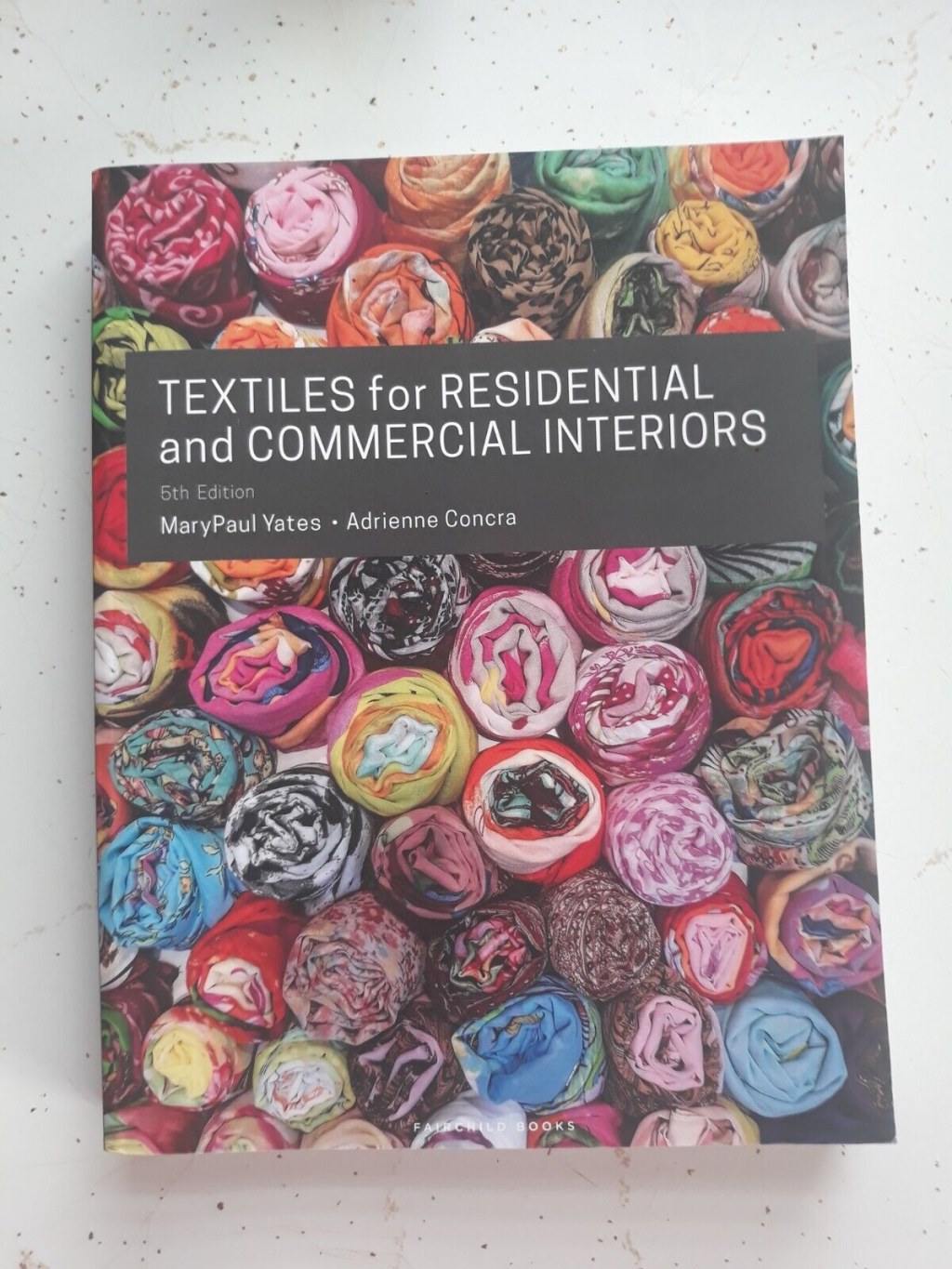Transform Your Space With High-Quality Textiles For Residential And Commercial Interiors – Click To Enhance Your Décor Today!
Textiles for Residential and Commercial Interiors
Introduction
Welcome, Interior Enthusiast, to our comprehensive guide on textiles for residential and commercial interiors. In this article, we will explore the world of fabrics and materials that can transform your living space into a cozy and stylish haven. Whether you are a homeowner looking to revamp your home or a business owner in need of durable and aesthetically pleasing fabrics for your commercial space, we have got you covered. So, let’s dive in and discover the wonders of textiles!
2 Picture Gallery: Transform Your Space With High-Quality Textiles For Residential And Commercial Interiors – Click To Enhance Your Décor Today!


Before we begin, let’s take a moment to understand the importance of textiles in interior design. Textiles play a vital role in enhancing the overall look and feel of any space. They add warmth, texture, and visual interest to a room, while also providing functional benefits such as insulation, sound absorption, and durability. With the right selection of textiles, you can create a welcoming and visually stunning environment that reflects your personal style or brand identity.

Image Source: ebayimg.com
Now, let’s explore the different aspects of textiles for residential and commercial interiors.
What are Textiles for Residential and Commercial Interiors?
In the realm of interior design, textiles refer to any type of fabric or material used to decorate and furnish living or working spaces. They encompass a wide range of options, including upholstery fabrics, curtains, drapes, rugs, carpets, and wall coverings. Textiles can be made from natural fibers like cotton, linen, silk, and wool, or synthetic materials such as polyester and nylon. Each type of textile offers unique characteristics and benefits, making it essential to choose the right fabric for your specific needs.
Who can Benefit from Textiles for Residential and Commercial Interiors?

Image Source: ebayimg.com
Both homeowners and business owners can benefit from the use of textiles in their residential and commercial interiors. Homeowners can create a personalized and comfortable living space by selecting textiles that reflect their style and preferences. Textiles can transform a house into a home, adding warmth, color, and texture to every room.
On the other hand, business owners can utilize textiles to enhance their commercial spaces and create a welcoming environment for their customers or clients. From hotels and restaurants to offices and retail stores, the right choice of textiles can elevate the ambiance and contribute to the overall success of the business.
When to Choose Textiles for Residential and Commercial Interiors?
The decision to incorporate textiles into residential or commercial interiors depends on various factors, such as the desired aesthetic, functionality, and budget. If you are looking to create a cozy and inviting atmosphere, textiles are a must-have. They can be used to soften hard surfaces, add color and pattern, and create a sense of harmony within the space.
Additionally, textiles are particularly beneficial in commercial settings that require durability and practicality. For example, in high-traffic areas like hotels or restaurants, choosing textiles that are stain-resistant and easy to clean is crucial to maintain a clean and professional appearance.
Where to Find Quality Textiles for Residential and Commercial Interiors?
There are numerous sources where you can find quality textiles for residential and commercial interiors. Local fabric stores, interior design showrooms, and online retailers are excellent places to start your search. It is essential to consider factors such as fabric quality, durability, colorfastness, and maintenance requirements when selecting textiles.
Working with professional interior designers or decorators can also be advantageous, as they have the knowledge and expertise to guide you towards the best textile choices for your specific needs. They can help you navigate the vast array of options available and ensure that the fabrics you choose align with your vision and requirements.
Why Choose Textiles for Residential and Commercial Interiors?
The choice to incorporate textiles into residential and commercial interiors is driven by several compelling reasons. Firstly, textiles add visual interest and character to any space, allowing you to create a unique and personalized environment. They can be used as focal points or accents to showcase your style and taste.
Additionally, textiles provide functional benefits such as insulation, sound absorption, and privacy. They can help regulate temperature and reduce noise levels, contributing to a comfortable and tranquil atmosphere. Furthermore, textiles have the ability to transform plain and uninspiring spaces into vibrant and inviting areas that leave a lasting impression on visitors and occupants.
How to Select the Right Textiles for Residential and Commercial Interiors?
Selecting the right textiles for residential and commercial interiors involves careful consideration of various factors. Firstly, determine the purpose and functionality of the space. For high-traffic areas, choose durable and stain-resistant fabrics that can withstand daily wear and tear. In contrast, for more formal or luxurious spaces, opt for sumptuous and elegant textiles that exude sophistication.
Next, consider the color palette and overall design theme of the space. Textiles should complement and enhance the existing decor, whether it’s a minimalist, eclectic, or traditional style. Pay attention to the texture, pattern, and scale of the fabrics to create a harmonious and visually pleasing composition.
Lastly, don’t forget about maintenance and care requirements. Some textiles may require professional cleaning, while others can be easily spot cleaned or machine washed. Choose fabrics that align with your lifestyle and maintenance preferences to ensure long-lasting beauty and functionality.
Advantages and Disadvantages of Textiles for Residential and Commercial Interiors
Like any design element, textiles for residential and commercial interiors come with their own set of advantages and disadvantages. Let’s explore both sides to help you make an informed decision:
Advantages:
👍 Versatility: Textiles offer endless possibilities for creativity and personalization. They come in a wide range of colors, patterns, and textures to suit any design style.
👍 Comfort and Softness: Fabrics add a layer of comfort and softness to furniture and surfaces, making them more inviting and cozy.
👍 Sound Absorption: Certain textiles have excellent sound-absorbing properties, reducing echo and noise levels in the space.
👍 Insulation: Fabrics can provide insulation by trapping heat during colder months and keeping the space cooler during warmer months.
👍 Aesthetics: Textiles can instantly transform the look and feel of a room, creating a visually appealing and harmonious atmosphere.
Disadvantages:
👎 Maintenance: Some textiles require regular maintenance and cleaning to keep them looking their best, which can be time-consuming and costly.
👎 Allergy Concerns: Certain fabrics may trigger allergies or sensitivities in individuals, requiring careful consideration for those with specific health conditions.
👎 Fading and Colorfastness: Sunlight and exposure to certain chemicals can cause textiles to fade over time, impacting their visual appeal.
👎 Durability: Not all textiles are equally durable, and some may show signs of wear and tear more quickly than others, especially in high-traffic areas.
👎 Cost: Depending on the quality and type of fabric, textiles can range from affordable to high-end, requiring budget consideration.
Frequently Asked Questions About Textiles for Residential and Commercial Interiors
1. Can all textiles be used in both residential and commercial settings?
While many textiles can be used in both settings, it is essential to consider factors such as durability, fire safety regulations, and maintenance requirements when selecting fabrics for commercial spaces.
2. How often should I clean my textiles?
The frequency of cleaning will depend on factors such as fabric type, usage, and level of dirt or stains. It is recommended to follow the manufacturer’s guidelines for cleaning and maintenance.
3. Are natural fibers better than synthetic materials?
Both natural fibers and synthetic materials have their advantages and disadvantages. Natural fibers are often prized for their breathability and eco-friendliness, while synthetic materials offer durability and stain resistance. The choice depends on your priorities and specific needs.
4. Can I mix different types of textiles in one space?
Absolutely! Mixing different types of textiles can add depth and visual interest to a room. Just be mindful of coordinating colors, patterns, and textures to ensure a cohesive and harmonious look.
5. What are some popular textile trends for residential and commercial interiors?
Current textile trends include eco-friendly fabrics, bold patterns and prints, and a mix of textures. Sustainable materials such as organic cotton and recycled polyester are gaining popularity, reflecting the growing emphasis on environmentally conscious design choices.
Conclusion
Now that you have gained a comprehensive understanding of textiles for residential and commercial interiors, it’s time to embark on your design journey. Remember to consider the purpose, functionality, and aesthetic requirements of your space when selecting fabrics. Whether you prefer natural fibers or synthetic materials, there is a world of possibilities waiting to transform your home or business into a stunning and inviting environment.
Explore different textures, experiment with patterns, and embrace the power of textiles to create a space that truly reflects your style and personality. Happy designing!
Final Remarks
Disclaimer: The information provided in this article is for general informational purposes only and does not constitute professional advice. Always consult with a qualified interior designer or decorator for personalized recommendations and guidance tailored to your specific needs and requirements.
This post topic: Interiors


